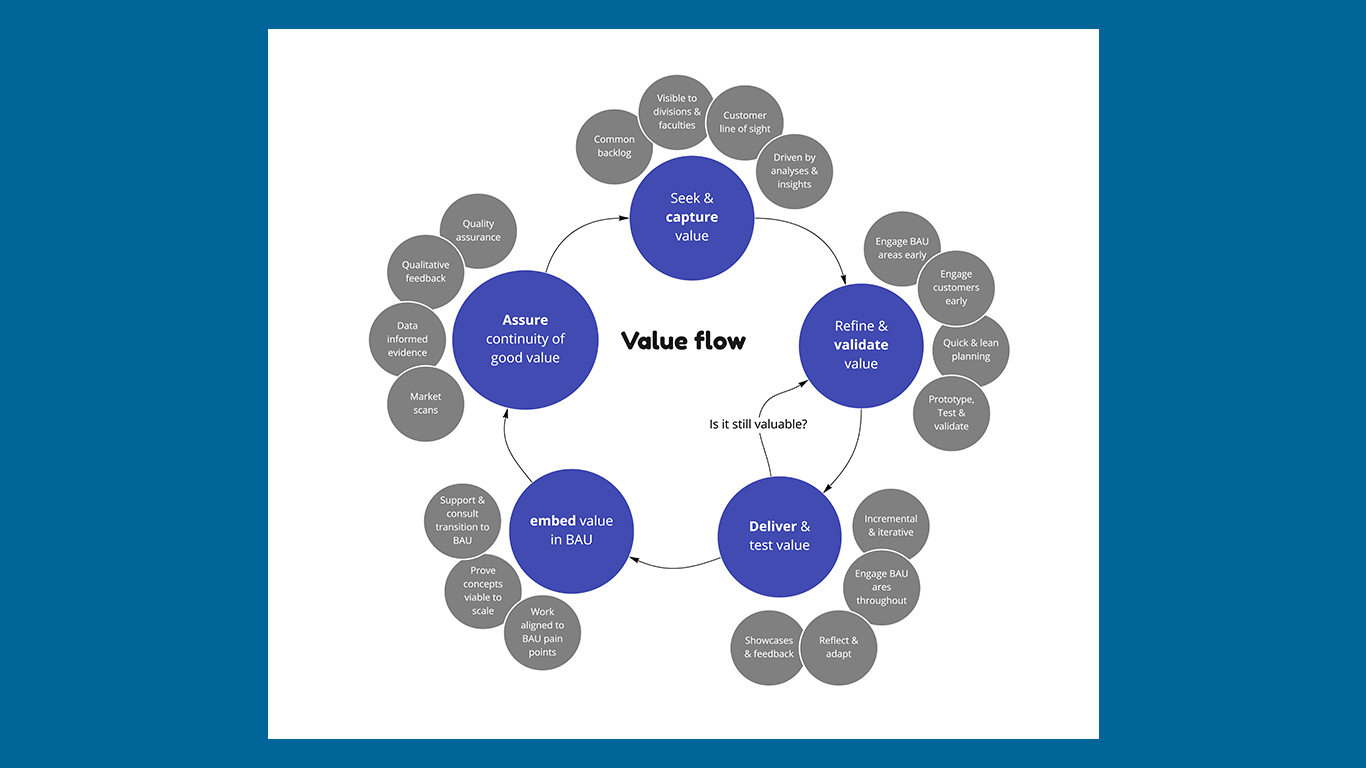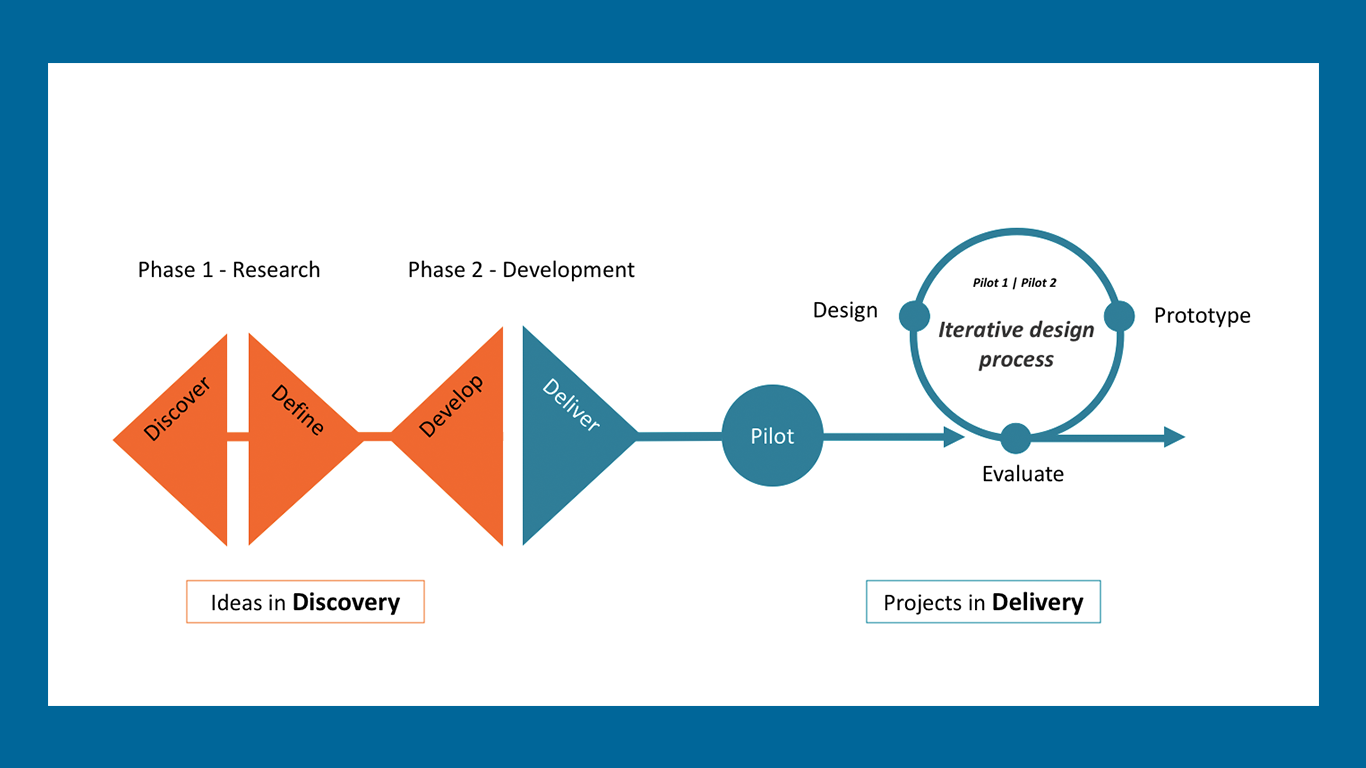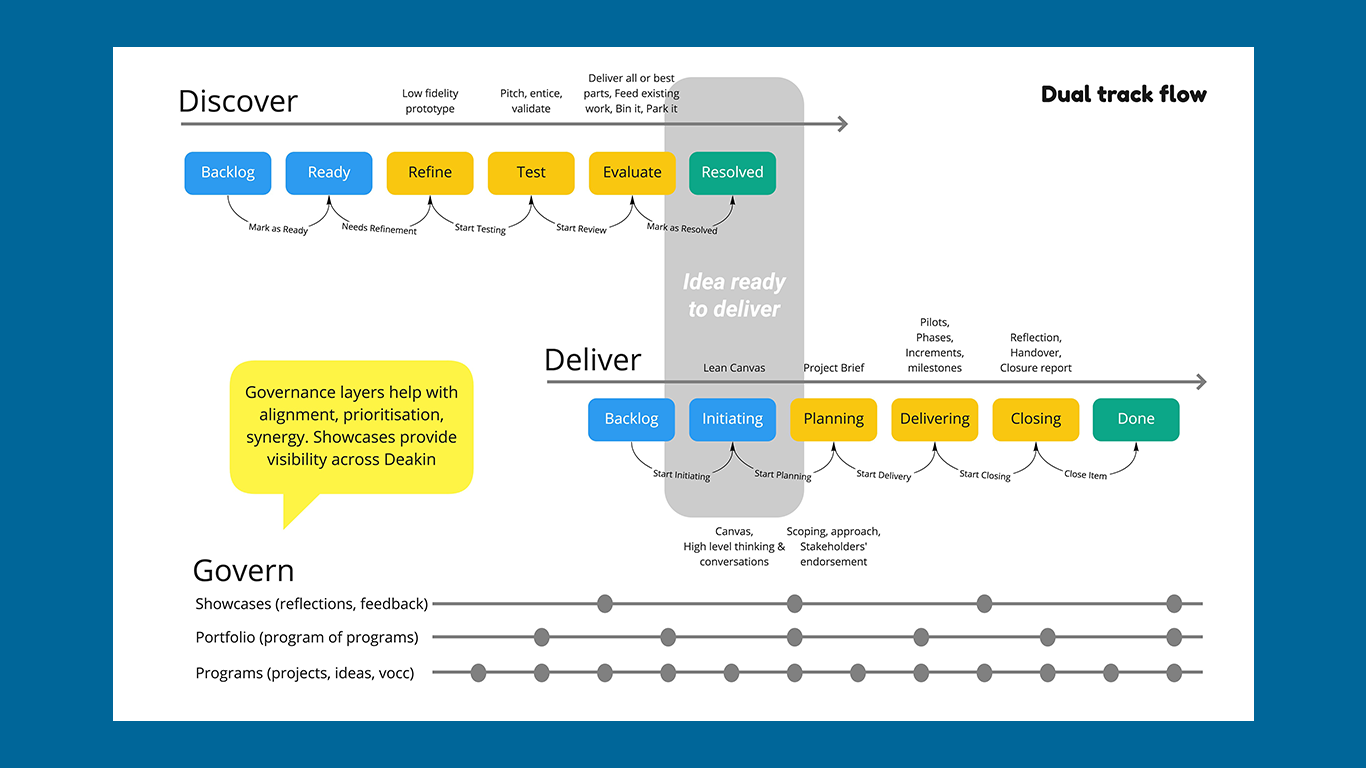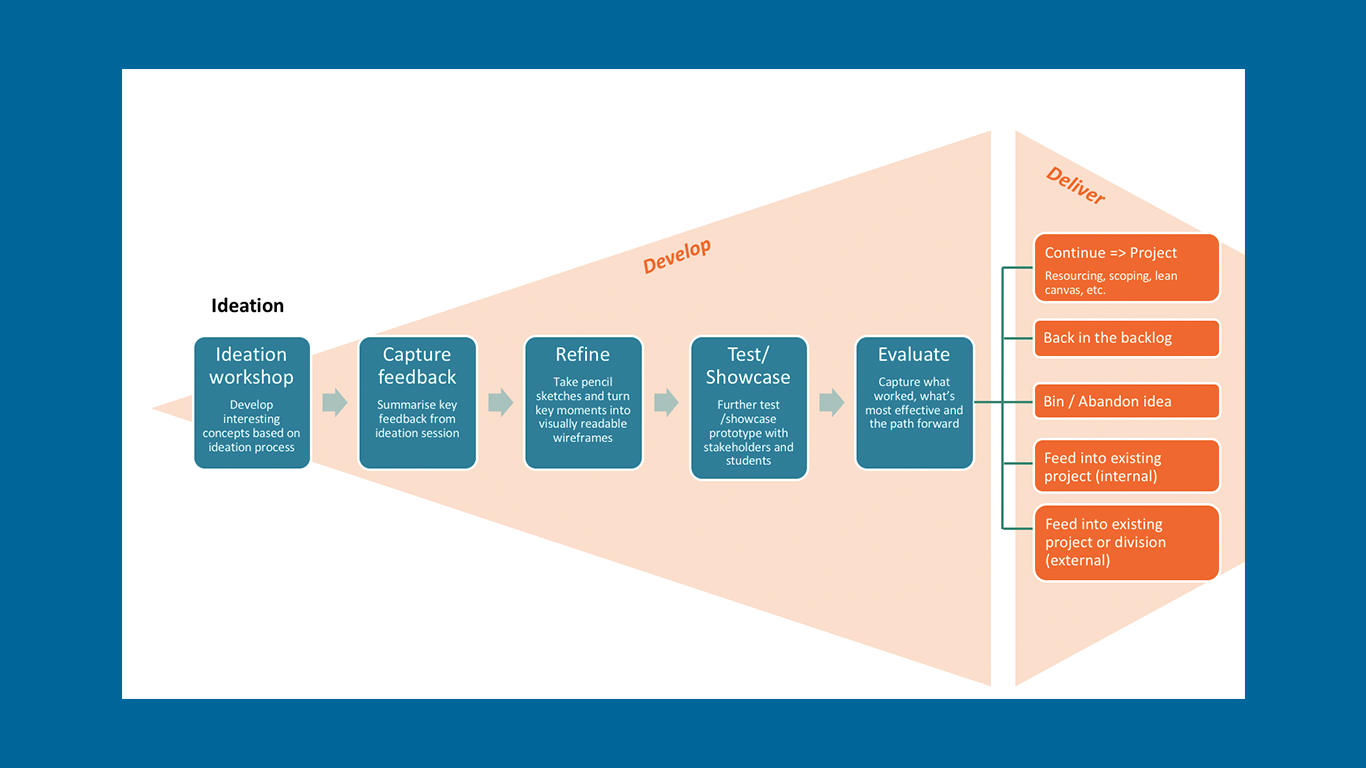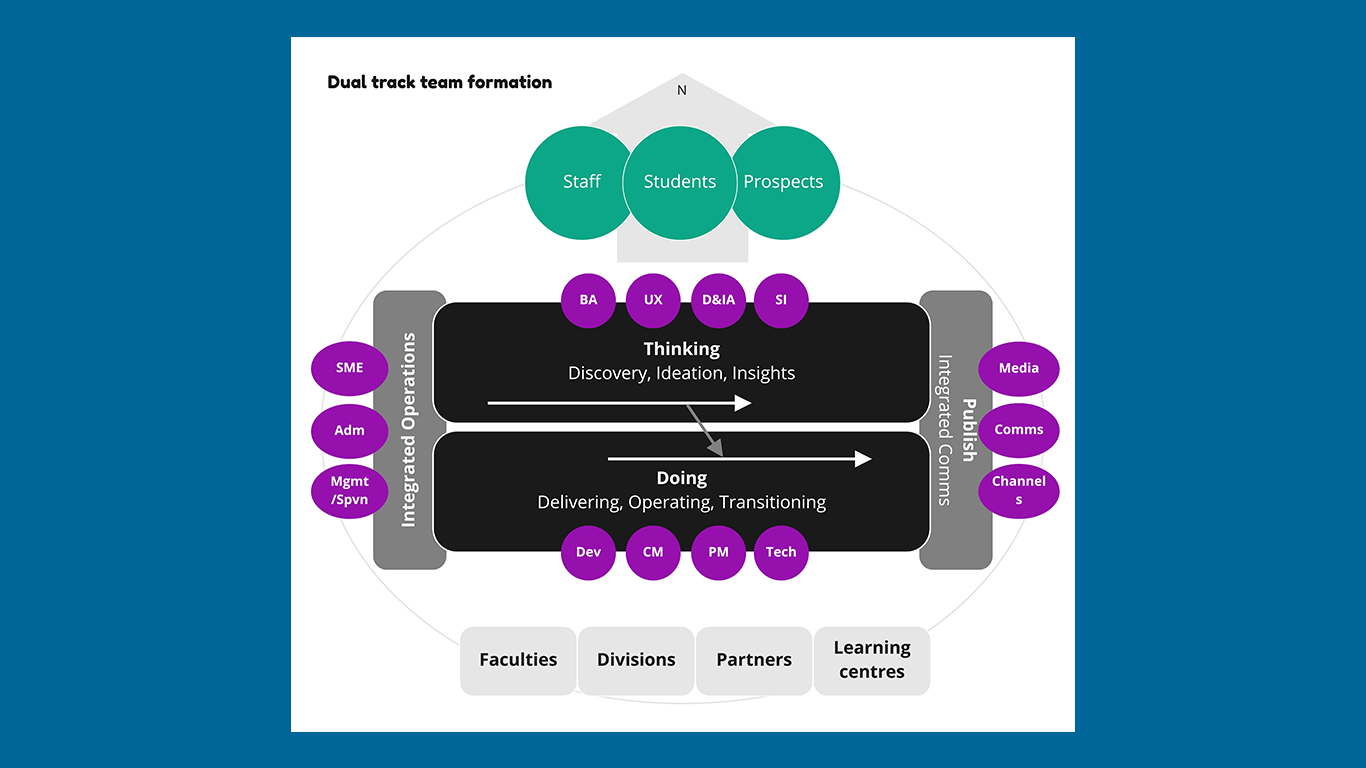Dual-track workflow for Innovation as a Service
Cloud Campus team was working in the space of service design for cloud learners. In terms of projects, it was a complex environment with a number of stakeholders involving students, faculties and support services. Delivering successful change in such settings relies heavily on how project teams have taken end-users and stakeholders along the journey. The solution needs to cater for different, and often competing, expectations.
If project teams don’t engage users early enough, they risk low adoption or uptake by users. This is what we observed in some of our projects. Post implementation reviews highlighted users were not using what we delivered as much as we hoped. For example, a year was spent implementing Start Anytime project and few months afterwards convincing faculties to offer courses using this mode. Nevertheless, very little traction was achieved.
There was clear need at our end to change our approach so we test and validate our ideas/projects early on.
My involvement
Looking after the service delivery for the team, my role was to conduct an evaluation of our delivery approach and provide advice to the team regarding how might we transform our way of working so our users and stakeholders are better engaged and our projects solve real problems.
Dual-track workflow
Taking ideas from how innovation was being done in other sectors, I designed a dual-track worflow for the team. It was about how would be work together as a team. It was called dual-track as there were two parallel, yet interconnected processes: Discovery process and Delivery process.
Discovery flow
Discovery flow focused on defining and refining problems as well as testing and validationg their potential solutions early so we can decide if an idea or solution has real merit. Users and stakedholdesr were involved throughout this cycle.
Delivery flow
Delivery flow would take the validated ideas from discovery cycle and implement them as projects. We’ll deliver the projects using agile and incremental approaches. During each stage of the project, we’ll engage stakeholders who would already be familiar with the context and background through the discovery process.
There were additional bespoke nuances built in the process that allowed us to handover the insights/learnings gained from discovery process to another team in our organisation if we decided our idea was better suited to fit in the work they were already doing. This increased cross team collaboration as well.
Impact
The idea of having dual tracks encourage the shift of focus in the team. We spent more time discovering (or figure out) the best next things to do so that our efforts on delivering those things had much better chances of success. We saw that faculties and divisions often became champions of the projects we work on together and embedding of changes became so much more welcoming.
There are regular validation points in the whole flow to validate what we were going remained valueable and our assumptions were still correct. See value flow and dual-track.
